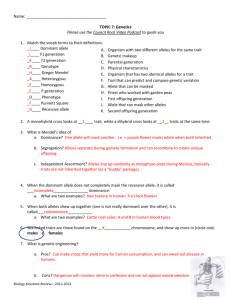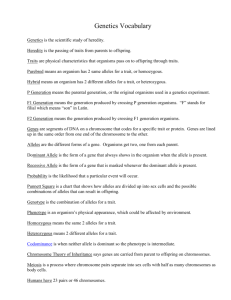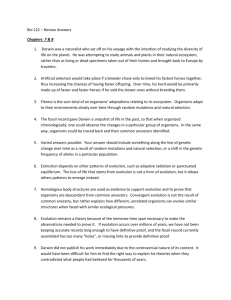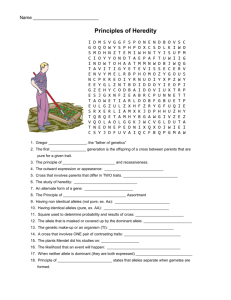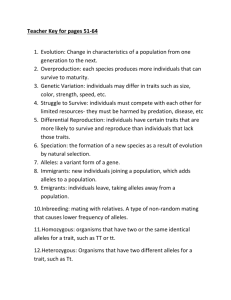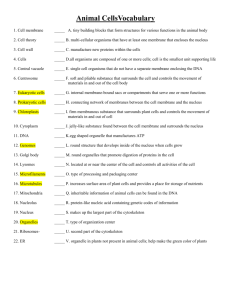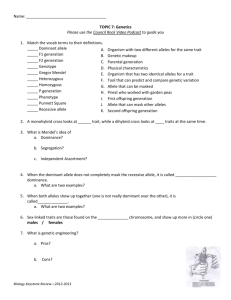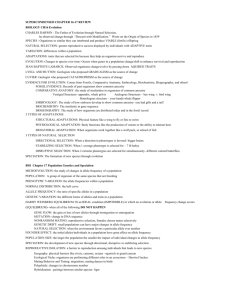ZAP Game – Vocabulary Definitions The organized way that
advertisement
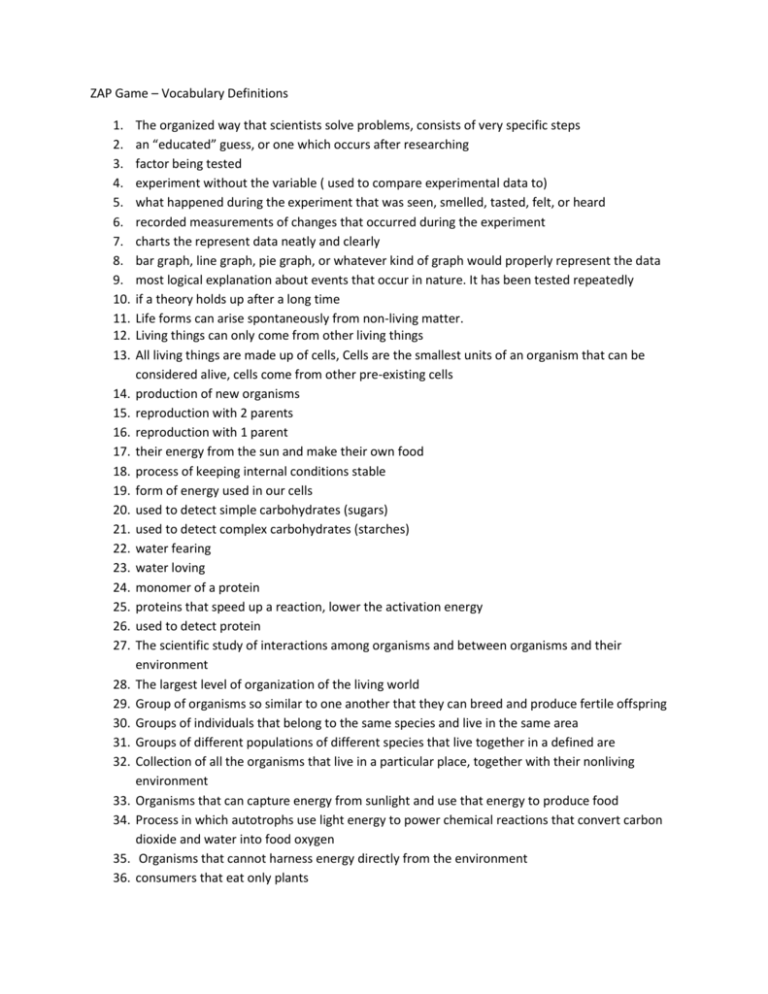
ZAP Game – Vocabulary Definitions 1. 2. 3. 4. 5. 6. 7. 8. 9. 10. 11. 12. 13. 14. 15. 16. 17. 18. 19. 20. 21. 22. 23. 24. 25. 26. 27. 28. 29. 30. 31. 32. 33. 34. 35. 36. The organized way that scientists solve problems, consists of very specific steps an “educated” guess, or one which occurs after researching factor being tested experiment without the variable ( used to compare experimental data to) what happened during the experiment that was seen, smelled, tasted, felt, or heard recorded measurements of changes that occurred during the experiment charts the represent data neatly and clearly bar graph, line graph, pie graph, or whatever kind of graph would properly represent the data most logical explanation about events that occur in nature. It has been tested repeatedly if a theory holds up after a long time Life forms can arise spontaneously from non-living matter. Living things can only come from other living things All living things are made up of cells, Cells are the smallest units of an organism that can be considered alive, cells come from other pre-existing cells production of new organisms reproduction with 2 parents reproduction with 1 parent their energy from the sun and make their own food process of keeping internal conditions stable form of energy used in our cells used to detect simple carbohydrates (sugars) used to detect complex carbohydrates (starches) water fearing water loving monomer of a protein proteins that speed up a reaction, lower the activation energy used to detect protein The scientific study of interactions among organisms and between organisms and their environment The largest level of organization of the living world Group of organisms so similar to one another that they can breed and produce fertile offspring Groups of individuals that belong to the same species and live in the same area Groups of different populations of different species that live together in a defined are Collection of all the organisms that live in a particular place, together with their nonliving environment Organisms that can capture energy from sunlight and use that energy to produce food Process in which autotrophs use light energy to power chemical reactions that convert carbon dioxide and water into food oxygen Organisms that cannot harness energy directly from the environment consumers that eat only plants 37. 38. 39. 40. 41. 42. 43. 44. 45. 46. 47. 48. 49. 50. 51. 52. 53. 54. 55. 56. 57. 58. 59. 60. 61. 62. 63. 64. 65. 66. 67. 68. 69. 70. 71. consumers that eat only meat consumers that eat both plants and animals break down organic matter A series of steps in which organisms transfer energy by eating and being eaten A network of complex interactions that shows the feeding relationship among the various organisms in an ecosystem 2 species living in a close long term relationship one specie lives in or on another specie and harms it one specie benefits and the other is neither benefited nor harmed both species are benefitted one specie consumes the other construction of cell membrane, 2 layers of phospholipids transport of substances through the membrane without using energy movement of solute movement of water transport of substances through the membrane that requires energy brings big things in to cell brings big things out of cell jelly like substance found in cells double membrane around nucleus storage of food or waste or water carries out cellular respiration, makes ATP for the cell package molecules to be moved to other parts of the cell fibers made of ball shaped protein called actin connected in long strings that help the cell to move organelles small hair like structures made of microtubules; aid in movement of some cells long, tail like structures made of microtubules; aid in movement of some cells rigid structure outside cell membrane carries out photosynthesis usually bacterial cells with no membrane bound organelles membrane bound organelles with distinct nucleus a difference in the concentration of a substance across a membrane the area (inside or outside the cell) that has a LOWER concentration of solute the area that has a HIGHER concentration of solute the areas are in equilibrium The part of a cell’s life cycle when the cell divides it nuclear contents into 2 nuclei which are identical The part of a cell’s life cycle when the cytoplasm divides into 2 cells which are identical 72. They contain chromosomes in PAIRS 73. Only contains ONE chromosome from each pair 74. Body cell 75. 76. 77. 78. 79. 80. 81. 82. 83. 84. 85. 86. 87. 88. 89. 90. 91. 92. 93. 94. 95. 96. 97. Sex cell Process of making 4 haploid sex cells a characteristic of an organism the study of how traits are passed from parents to offspring a cross between two organisms that differ in only one trait a cross between two organisms that differ in 2 traits the factor that controls traits the possibilities of a gene (e.g. A or a) one allele is dominant to a recessive allele the allele that masks any other allele when there are 2 alleles present the allele that is masked by another allele having two identical alleles for a trait (AA or aa) having two dominant alleles for a trait (AA) having two recessive alleles for a trait (aa) having two different alleles for a trait (Aa) the visible traits of an organism (physical) the alleles that an organism carries (e.g. Aa or AA or aa) a model used to represent crosses between organisms Sugar found in DNA Sugar found in RNA Adenine, Thymine, Guanine, Cytosine Monomer of a nucleic acid Process of reproduction of 2 identical DNA strands 98. Mistakes in the sequence of DNA 99. Enzyme that unzips DNA 100. Enzyme that adds nucleotides to DNA template strand
